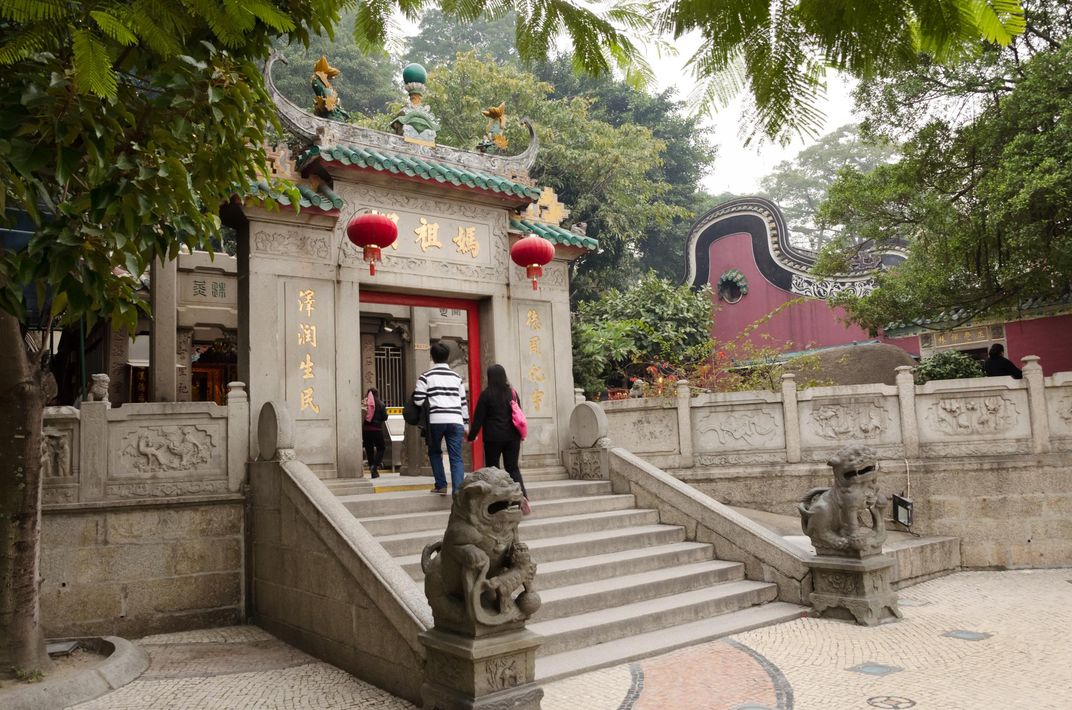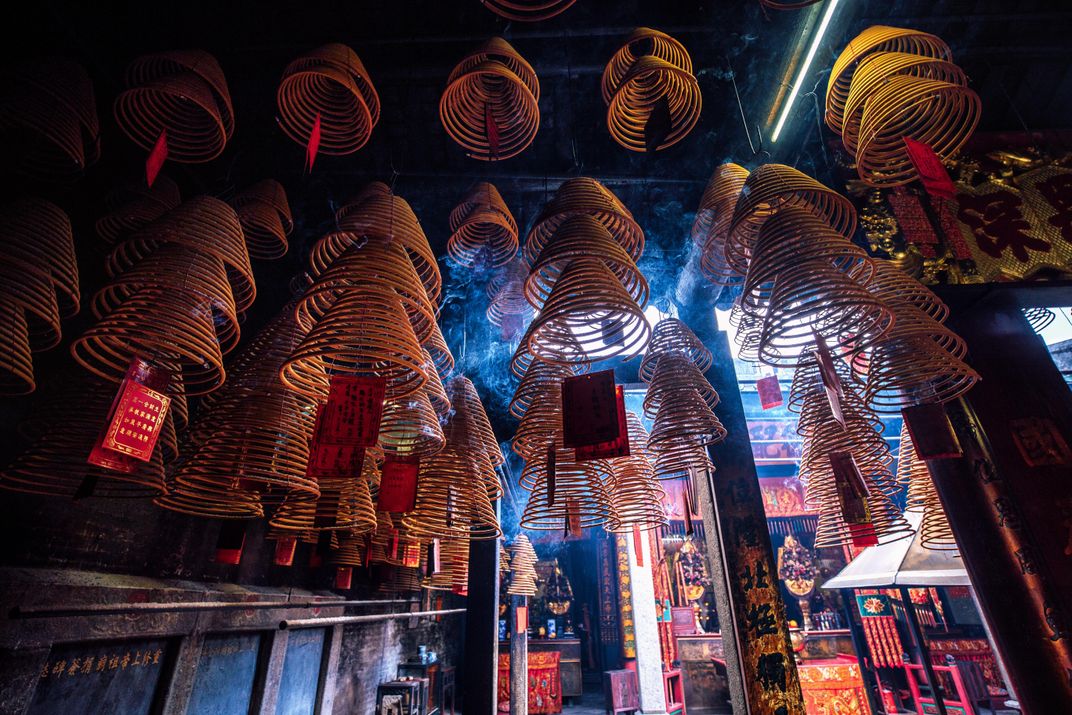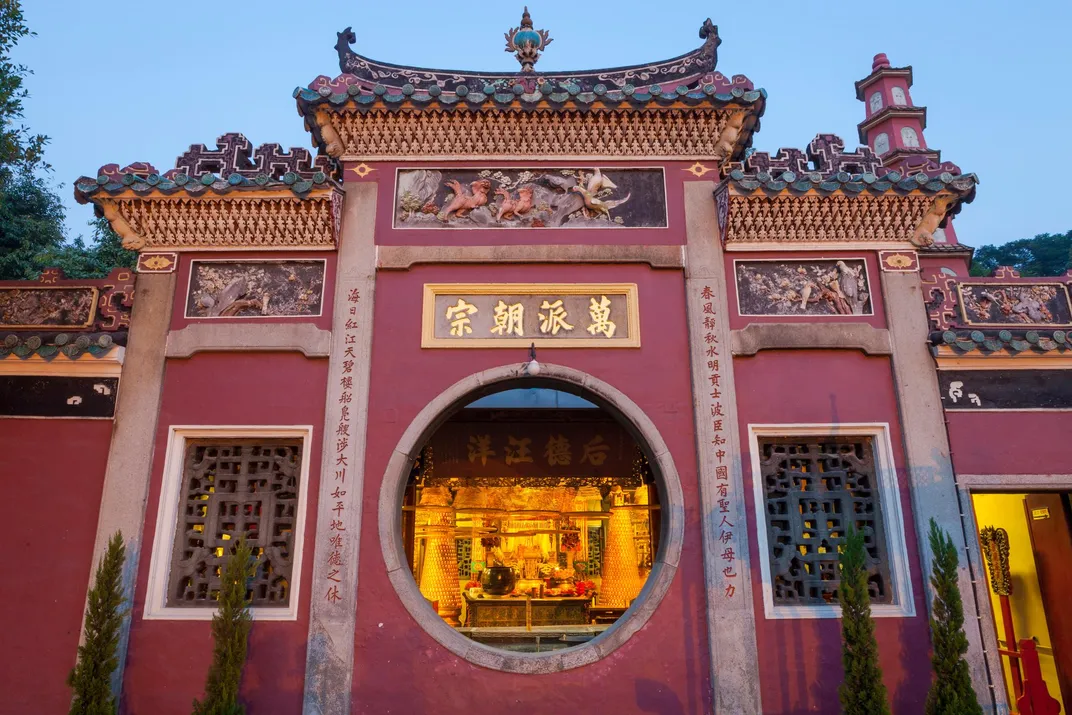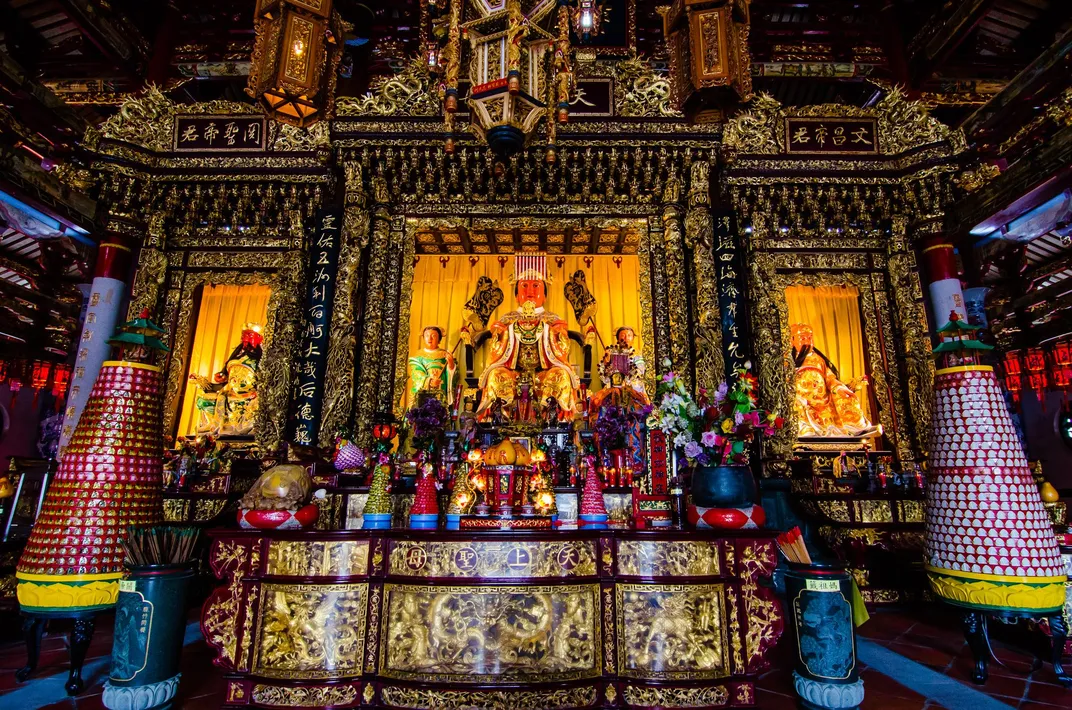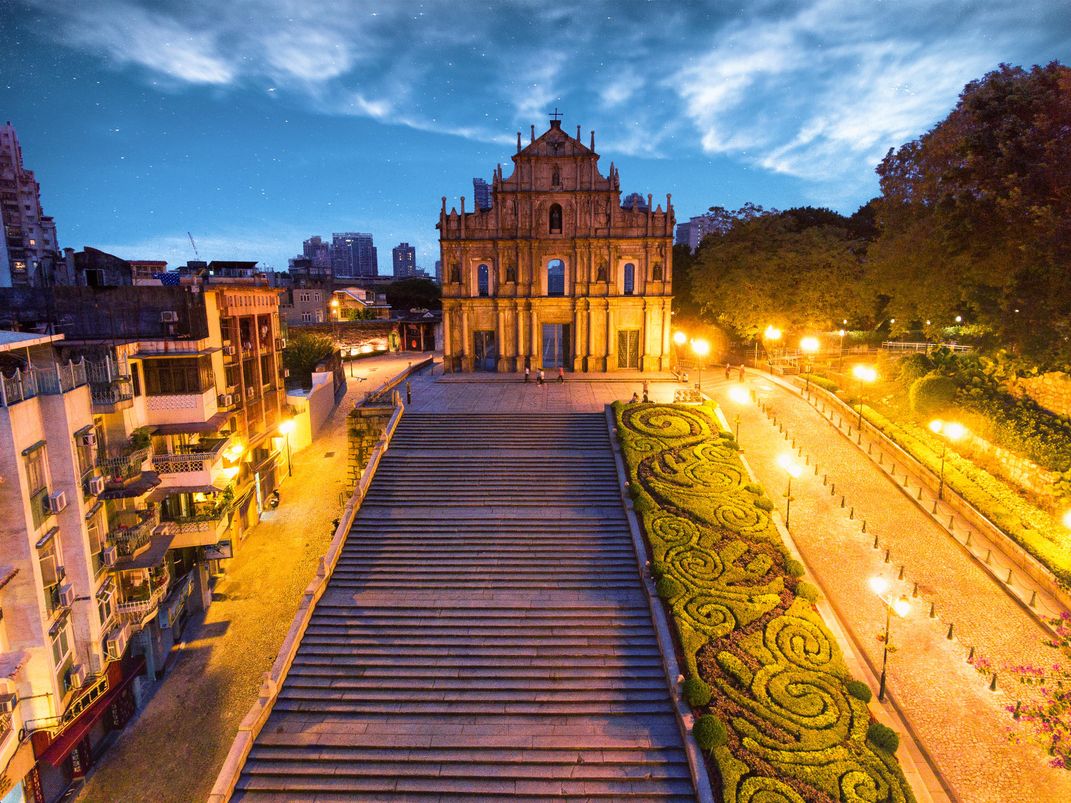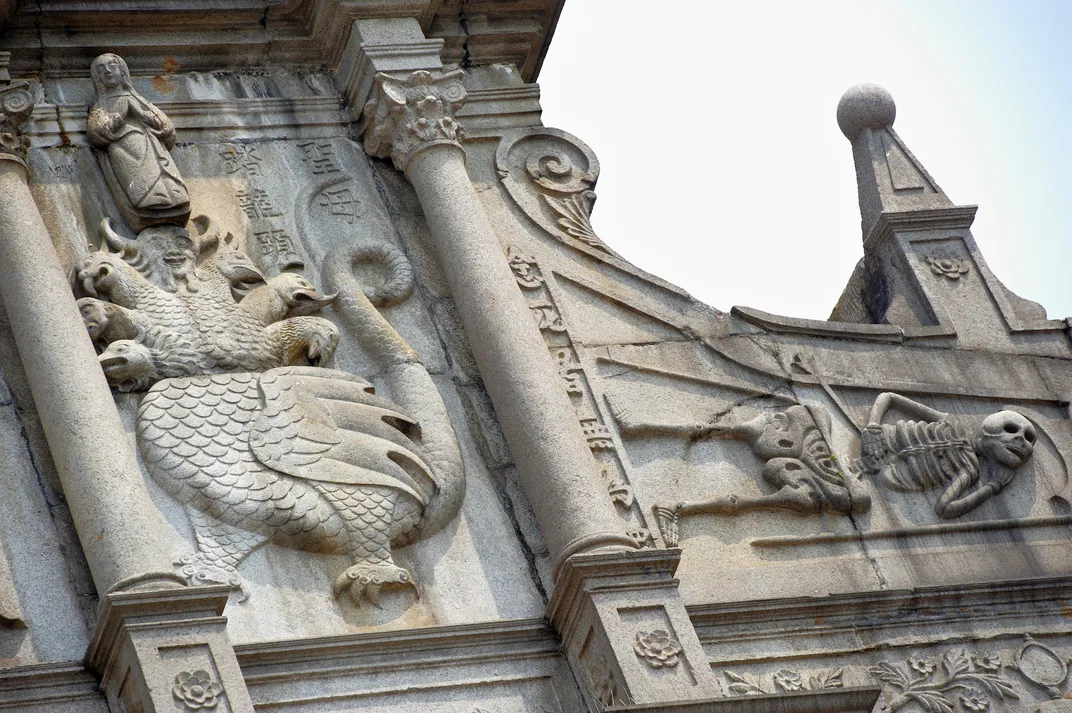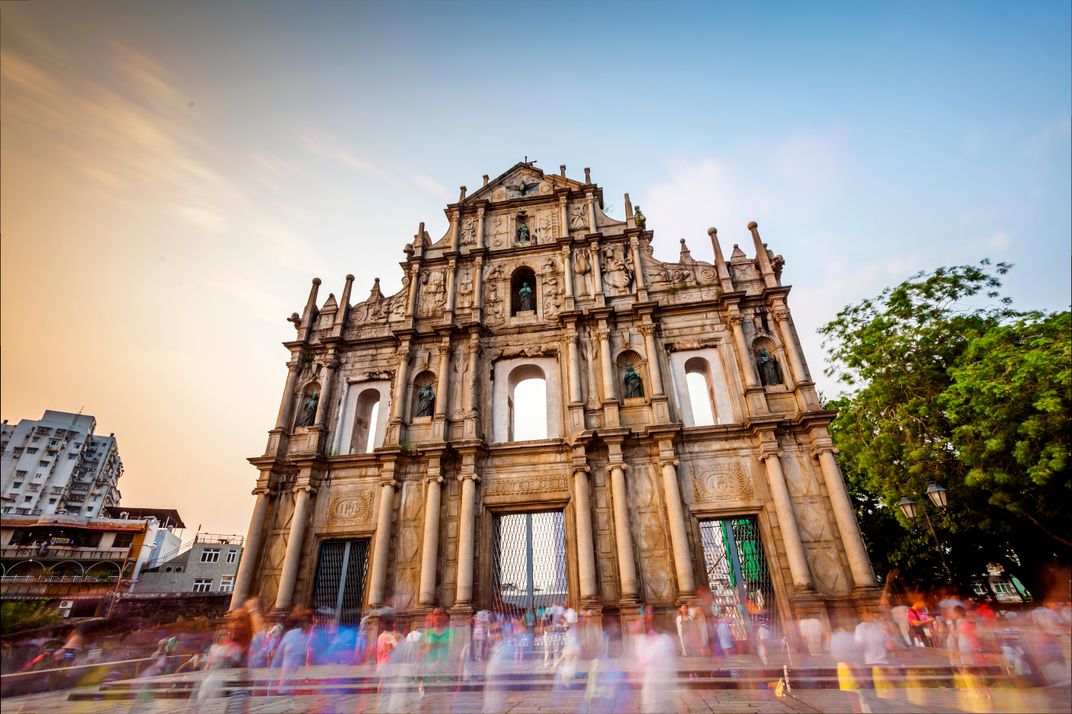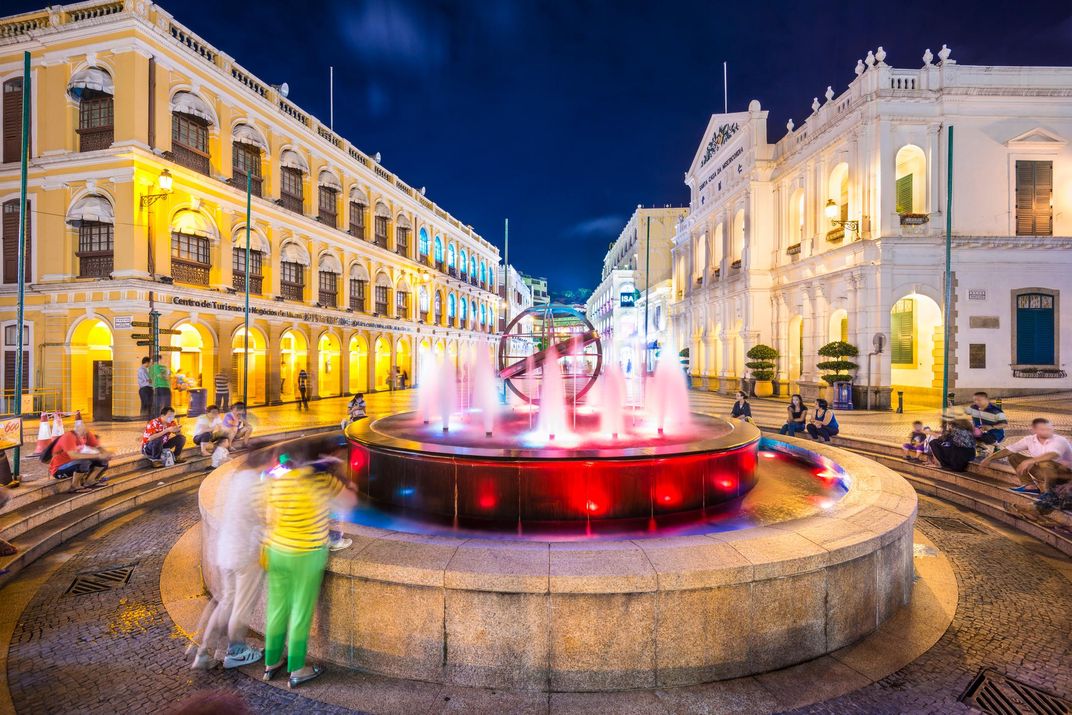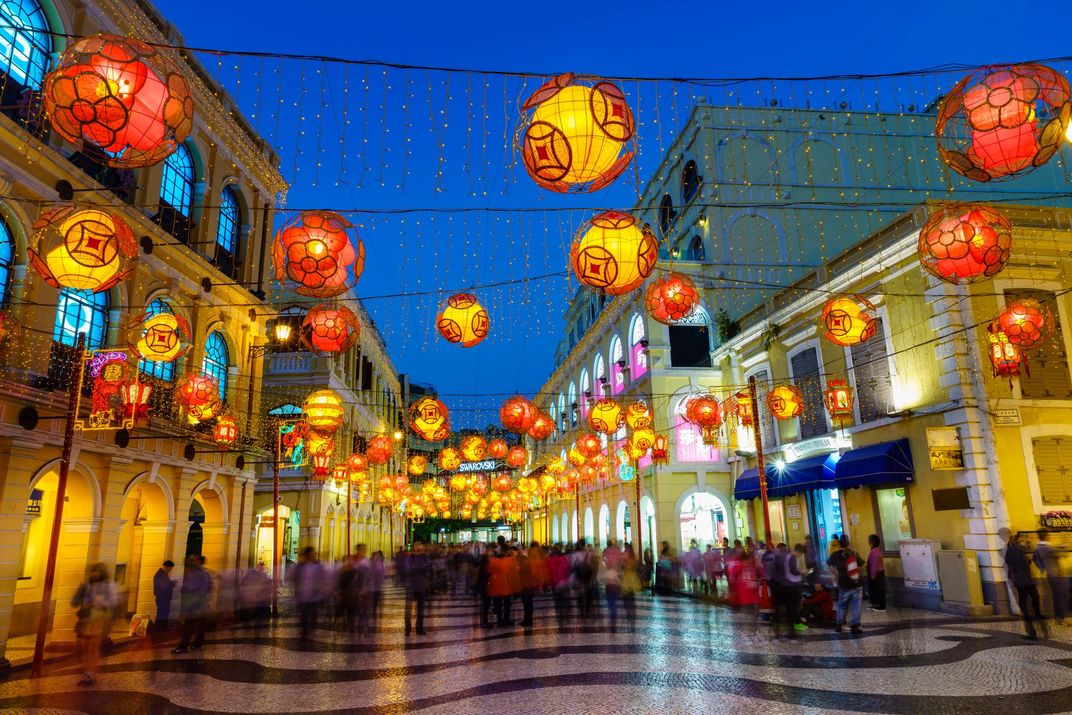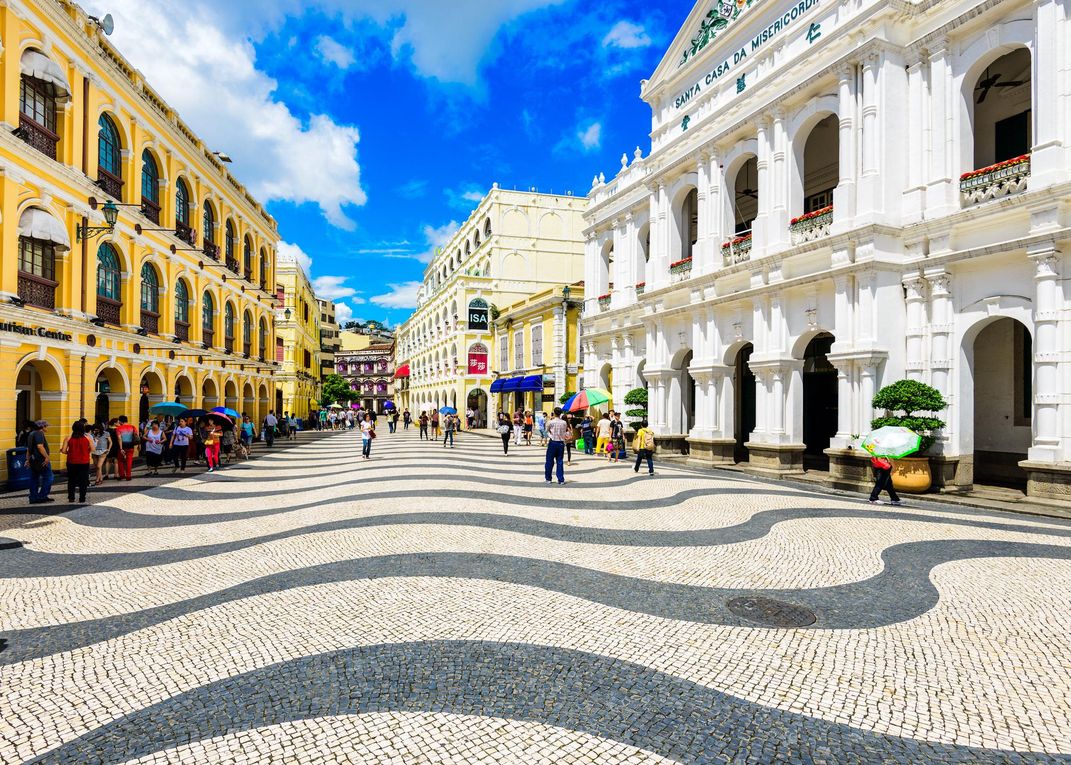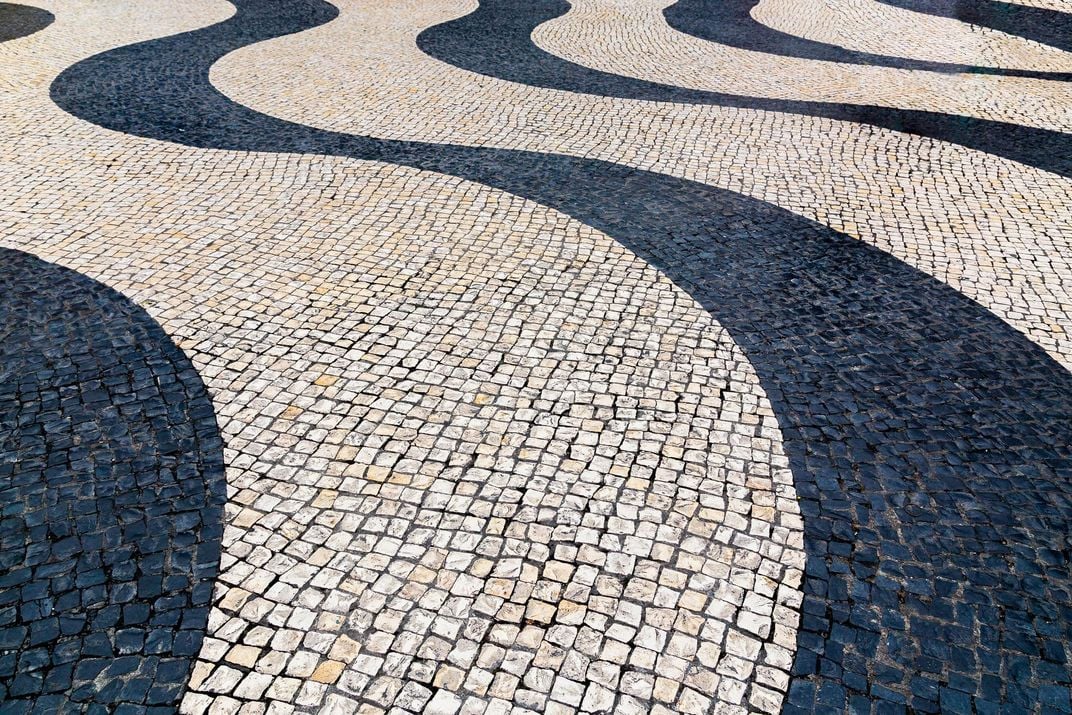Walking down the streets of Macao is an architectural world tour: stroll past pastel-colored, European-style houses and baroque churches at one turn, a Ming Dynasty Taoist temple at the next and a Western-style lighthouse at yet another. Ruled by the Portuguese from mid-16th century until 1999 when it became a Special Administrative Region of China, Macao represents the first and longest encounter between the West and China, and its cultural footprint is unlike anywhere else in the world.
In 2005, Unesco added Macao Historical Center, comprising 22 monuments and buildings of Portuguese and Chinese origin, to its World Heritage List. Linked by a maze of streets, alleys and picturesque plazas, here are six historical landmarks every visitor to Macao should add to their itinerary.
A-Ma Temple
Situated on the western slope of Barra Hill overlooking the Pearl River, the A-Ma Temple is the oldest surviving building in Macao. Constructed during the Ming Dynasty to commemorate A-Ma, the Taoist deity of seafarers, it contains many examples of classic Chinese architecture and remains a daily place of worship. The temple reached its current size in 1828 and consists of six main areas: the Gate Pavilion, the Memorial Arch, the Prayer Hall, the Hall of Benevolence, the Hall of Guanyin and the Buddhist pavilion Zhengjiao Chanlin, connected by winding stairways, gardens and courtyards shrouded in incense. The pavilions are dedicated to the worship of different deities, fusing Confucianism, Taoism, Buddhism and folk beliefs.
Ruins of St. Paul's
Between 1602 and 1640, Jesuits built St. Paul's Church and St. Paul's College, the first western university in China, on top of a hill on the western side of the Macao Peninsula. Massive in size, the complex was regarded as a "Vatican of the East." However, in 1835, a typhoon-induced fire destroyed the complex, leaving only the church's dramatic granite façade and a grand staircase of 68 steps. Today, the ruins are Macao's most well-known landmark. Built by Chinese craftsmen and Japanese Christians fleeing persecution, the baroque-mannerist façade is a fascinating mix of Chinese and Western elements. In addition to images of Jesus Christ, the Virgin Mary and the Holy Spirit, it features Chinese characters, lions and peonies, Japanese chrysanthemums and mythological creatures. A steel structure supporting the back of the façade allows visitors to climb up to window level and admire the stonework up close. Nearby, the Museum of Sacred Art and Crypt houses the only remaining work from the college: a 17th-century painting of St. Michael the Archangel.
Senado Square
Senado Square is the heart and pulse of Macao, playing host to many public events and festivals. Lining its perimeter are pastel-colored buildings built in the 19th and 20th centuries, including Leal Senado, the former headquarters of the Portuguese from which the square gets its name, and the Holy House of Mercy, once a charity hospital for the city’s poor. The square is best known for its waves of cobbled black and white stones, which add to its Mediterranean atmosphere and reflect Macao's history as a maritime trading post.
Mandarin's House
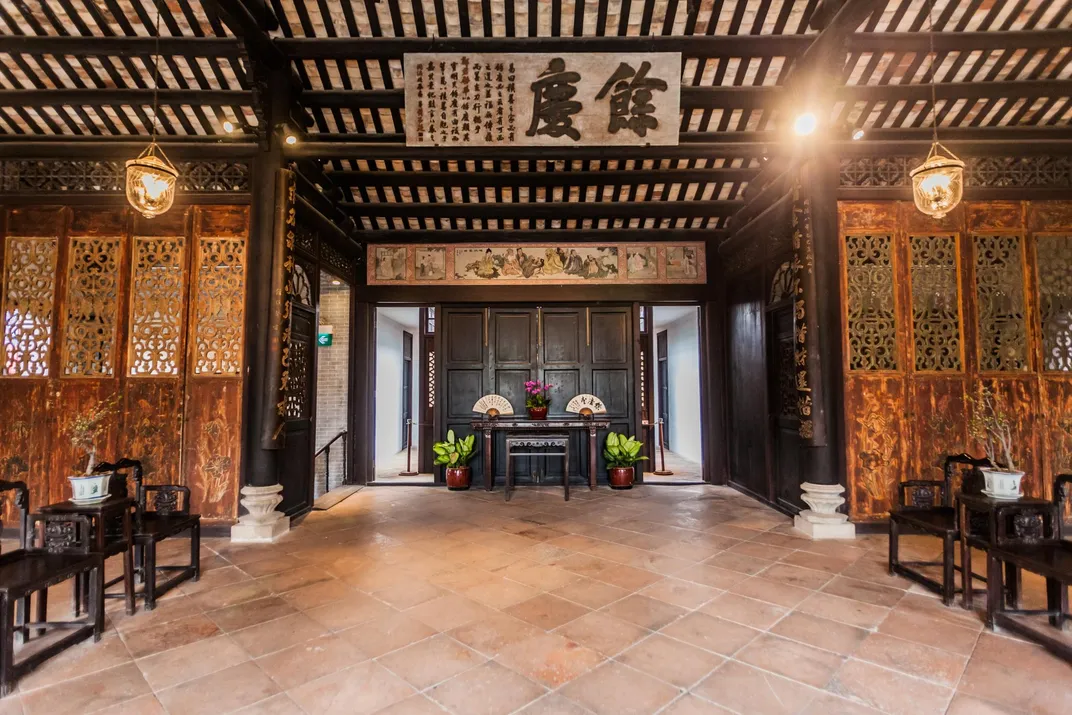
Built in 1881, the Mandarin’s House was the residence of the famous 19th-century Chinese thinker Zheng Guanyin. Though understated from the street, this historic family compound consists of a staggering total of 60 rooms and was, at the time, Macao’s largest private residence. Built mainly in the traditional Chinese style with brick courtyards, a moon gate and intricately carved doors, it also incorporates Western elements, such as false ceilings and French windows that look out to the Inner Harbor from the main hall. Following restoration work in the early 2000s, the house is now open to the public for tours.
Lilau Square
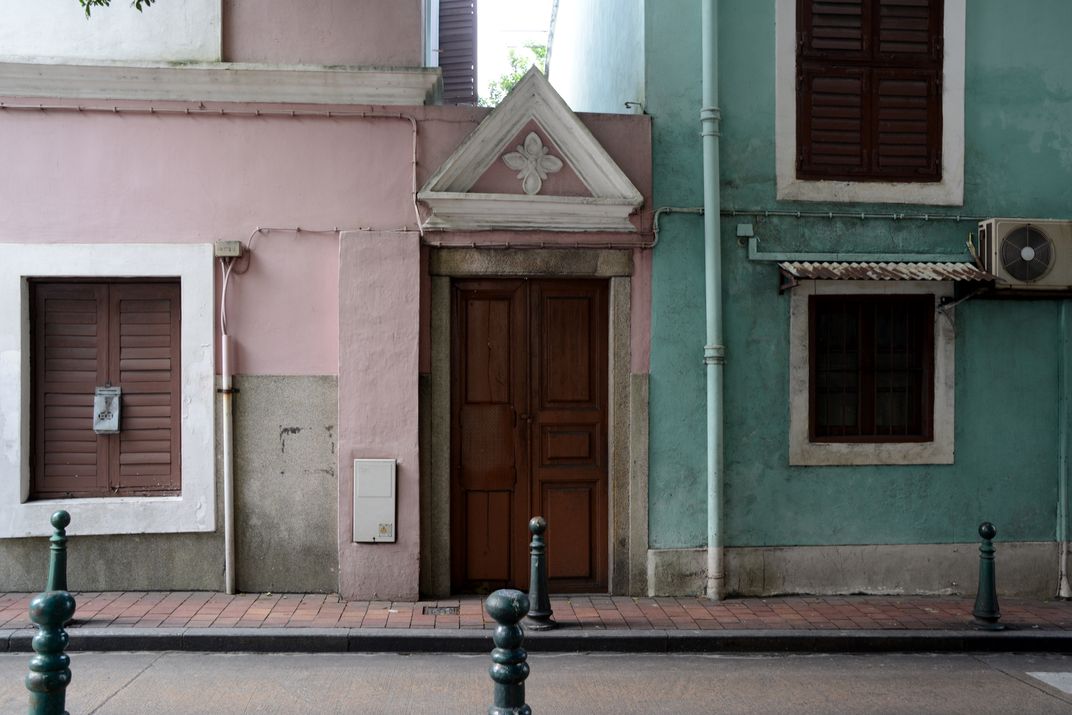
It is said that once someone drinks from the fountain in Lilau Square, they are destined to return to Macao. Lilau in Portuguese means "mountain spring," and this small public square north of Penha Hill used to be the principle source of water in Macao. The square was also one of the first areas to be inhabited by Portuguese settlers and embodies Macao’s cultural confluence. Covering three sides of the square are apartments built and decorated in the Portuguese style, featuring patios, wooden shades and small bridges connecting houses. On the fourth, across Barra Street, are the brick walls of Mandarin’s House.
Guia Fortress
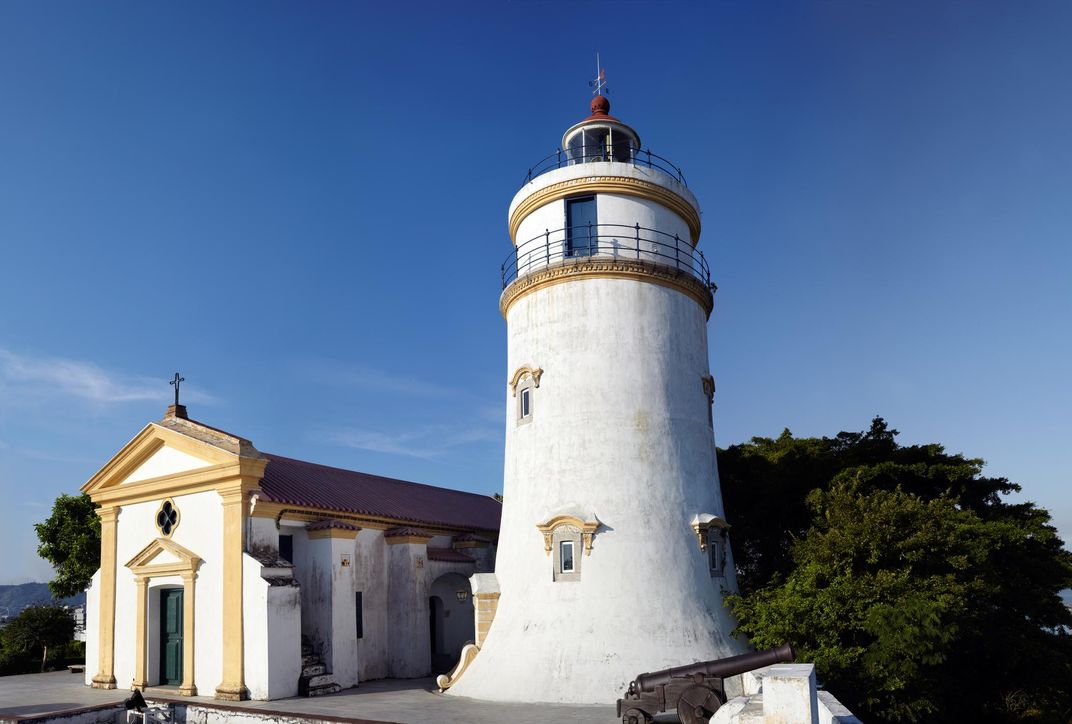
The Guia Fortress is the highest point in Macao, offering outstanding views of the peninsula as well as a glimpse into the city’s military and missionary history. Built between 1622 and 1638, following an unsuccessful attempt by the Dutch to take Macao from the Portuguese, the fortress also includes a western-style lighthouse and chapel. Dating back to 1865, the lighthouse was the first of its kind on the Chinese coast and is still in use today. The chapel, built in 1622, is dedicated to Our Lady of Guia (or “Guidance”) and was constructed by Clarist nuns to provide soldiers with religious services. In 1996, restoration work revealed frescoes lining the wall depicting both western and Chinese themes. Guia Fortress can be reached by cable car, car or foot.
Discover more of Macao's World Heritage.
* * *
Banner image by Anthony Zio.

/https://tf-cmsv2-smithsonianmag-media.s3.amazonaws.com/filer/99/e1/99e1c434-ea66-4f1f-a42c-940dff19910a/macao-world-heritage-banner-hires-v2.jpg)
